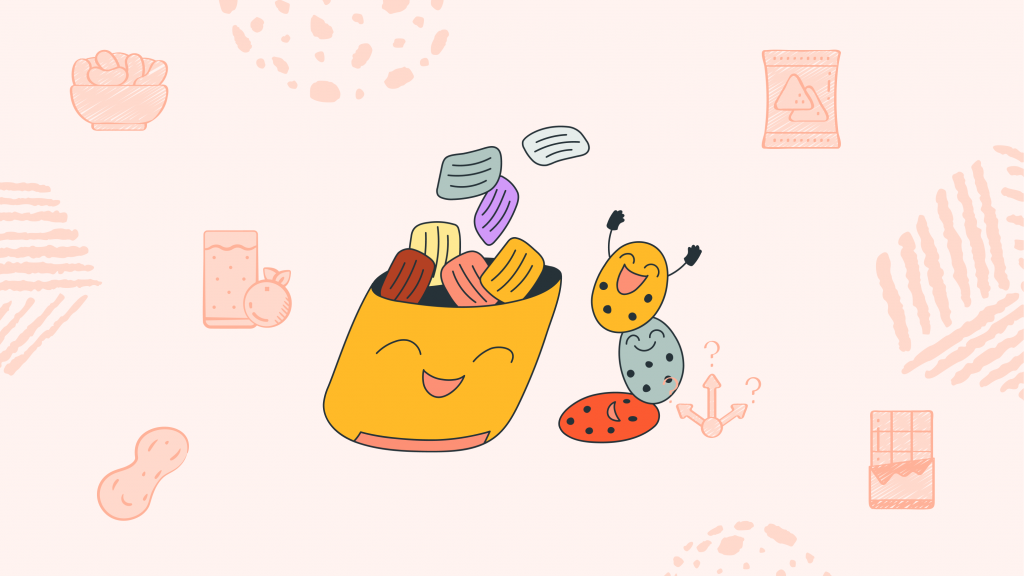Navigate the Maze of Temptation
Imagine you’re rushing between meetings or picking up the kids after school, and your stomach starts to grumble. There’s a vending machine just around the corner, beckoning with its array of chips, cookies, and sugary drinks.
This scenario is all too familiar in our hectic lives, where the convenience of unhealthy snacks constantly tests our resolve. The struggle is real, as these quick fixes provide immediate gratification but leave us facing the consequences of poor nutrition and energy crashes later.
The challenge isn’t just about willpower; it’s about finding a way to satiate hunger without compromising health, even when time and options are limited.
This battle against the convenience of unhealthy snacking is a significant aspect of our daily wellness journey.In the fast-paced rhythm of modern life, finding the right snack can feel like navigating a minefield. With the lure of convenience, it’s easy to fall prey to the siren song of vending machines and fast-food counters.
The Science of Snack Selection
When hunger strikes, our body and mind enter a complex dance influenced by neurochemical signals like ghrelin (the hunger hormone) and leptin (the satiety hormone). These signals, combined with the dopamine rush provided by sugar and fat-rich foods, can overpower our best intentions. Understanding the neurochemical processes that drive our snack choices helps us see why we often reach for unhealthy options and feel powerless to resist.
Why do we often reach for unhealthy snacks despite knowing better? The answer lies in the complex interplay of hormones and brain chemistry. When we’re hungry, our body releases ghrelin, a hormone that signals the brain to seek food.
Once we eat, leptin is released to signal fullness. However, high-calorie, sugar-laden snacks can cause a surge in dopamine, the ‘feel-good’ neurotransmitter, leading to a rewarding but fleeting sense of pleasure. This neurochemical response can create a powerful cycle of craving and satisfaction that’s hard to break.
Moreover, stress and lack of sleep can further skew these signals, making it even harder to choose healthy snacks. Understanding this neurochemical tug-of-war helps us recognize that our snack choices are not solely about self-control; they are also about our neurological response to certain foods.
Building Better Habits on the Go
To counteract these impulses, it’s crucial to have a game plan for snacking smart. This involves preparing and packing nutritious snacks ahead of time, understanding portion control, and learning to identify truly healthy options that satisfy both our hunger and our nutritional needs.
Practical advice on how to integrate healthy snacking into a busy lifestyle will empower readers to make better choices and develop sustainable habits.
It’s also important to understand portion control and the nutritional content of snacks. Even healthy foods can lead to weight gain if eaten in excess. Learning to read labels and understanding what constitutes a serving size can help manage this balance.
- Plan Ahead: Allocate time each week to plan your snacks. Make a list of nutritious options and purchase them during your regular grocery shopping. This foresight prevents the need for last-minute decisions, which often result in less healthy choices.
- Prepare Snacks in Advance: Pre-portion snacks into individual servings. This could mean dividing nuts into small bags, slicing vegetables and storing them in containers, or making homemade granola bars. Having these ready-to-eat options makes it easier to grab a healthy snack when you’re in a hurry.
- Understand Portion Sizes: Learn what a healthy serving size looks like for various snacks to avoid overeating. Use measuring cups or a kitchen scale at home to get a sense of proper portions, and familiarize yourself with reading nutrition labels to understand serving sizes and nutritional content.
- Choose Whole, Nutrient-Rich Foods: Focus on snacks that offer a balance of macronutrients (protein, fats, and carbohydrates) and are high in fiber and vitamins. Examples include fruits, vegetables, nuts, seeds, whole grains, yogurt, and lean proteins.
- Stay Hydrated: Sometimes, thirst is mistaken for hunger. Drinking water regularly can prevent unnecessary snacking. Carrying a water bottle with you can help meet your hydration needs and reduce the temptation to snack out of thirst.
- Be Mindful of Your Eating Habits: Pay attention to why you are snacking. Are you truly hungry, or are you eating out of boredom, stress, or habit? Mindful eating practices can help you recognize true hunger cues and choose snacks accordingly.
- Modify Your Environment: Keep healthy snacks visible and within easy reach at home, in the workplace, and even in the car. Conversely, make less healthy snacks less accessible to avoid temptation.
- Variety is Key: Including a variety of snacks in your diet can prevent boredom and provide a range of nutrients. Rotate your snack options weekly to keep things interesting and nutritionally balanced.
Implementing these strategies, a sustainable routine of healthy snacking that fits into the busy lifestyle can be created, helping to maintain energy levels, satisfy hunger, and support overall health.
Subscribe to newsletter
Get your Gut Health Starter Guide right now.
Elevate your Tuesdays with practical, science-backed wisdom propelling you forward on your gut health journey.

Triumphs in Tasteful Choices
In the bustling world of project management, Alex found himself trapped in a cycle of convenient but unhealthy eating habits. The immediate rush from coffee and vending machine treats was soon replaced by a plummeting energy level and a creeping increase in weight. Meetings became marathons, and productivity waned as the afternoon slumps hit harder each day.
Realizing the toll this was taking, Alex embarked on a mission to reclaim health and vitality. Sundays became meal prep days, with the kitchen buzzing as colorful fruits, assorted nuts, and Greek yogurt lined the shelves, replacing the processed snacks. This shift wasn’t just about food; it was a lifestyle change that brought structure and mindfulness to eating.
“Before making the switch, I felt like I was in a constant battle with my energy levels, and my weight was slowly creeping up. I knew something had to change,” Alex recalls. “Planning my meals and snacks was a game-changer. It took some effort initially, but the payoff was immense. My energy became more stable throughout the day, and I no longer experienced those intense crashes. Plus, I started to see the weight come off, which was a huge boost to my self-esteem.”
Alex continues, “Now, I look forward to my mid-morning snack of almonds and a piece of fruit or my afternoon Greek yogurt. It’s not just about the physical benefits; I feel more in control, more present, and honestly, happier. It’s amazing how these small changes have led to such significant improvements in my life.”
In this journey, Alex discovered that mindful snacking and intentional eating were not just steps towards better health but towards a more fulfilled and balanced life. “It’s not just a diet change; it’s a lifestyle change, and it’s absolutely worth it,” Alex concludes, hoping to inspire others to take that first step towards healthier snacking habits.


















